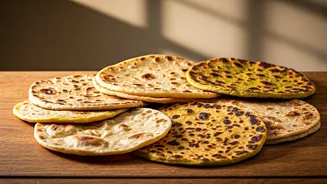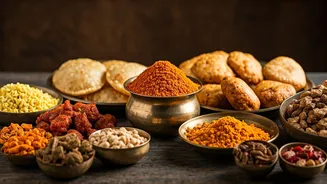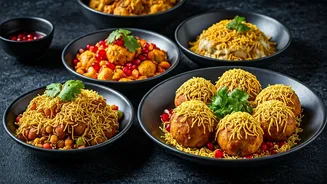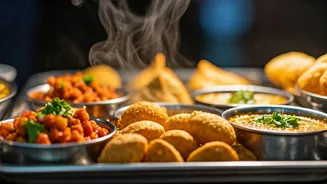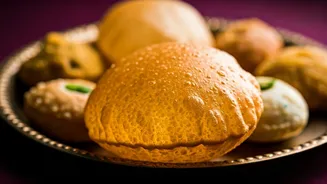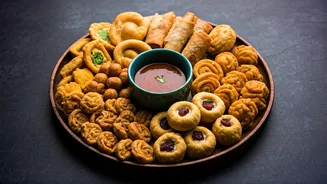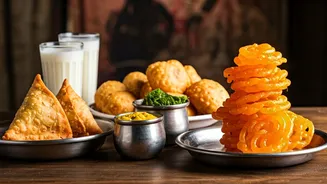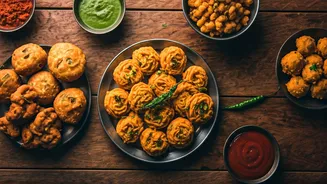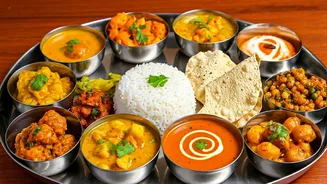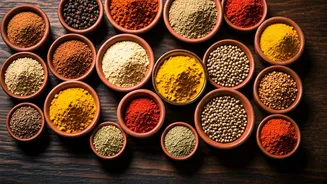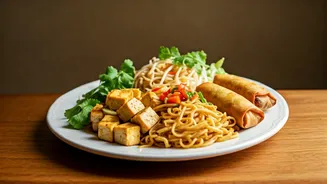Roti Overview
Rotis, an integral part of Indian cuisine, come in a myriad of forms, each offering a unique taste and texture. The nutritional value, digestibility, and enjoyment
of these flatbreads can vary significantly depending on the ingredients and method of preparation. Understanding these differences allows us to appreciate the versatility of rotis and choose the ones that best suit our dietary needs and preferences. This guide provides a detailed look at seven prominent roti types, their digestive characteristics, and the weather conditions that perfectly complement each one, to enable us to make wise choices.
Whole Wheat Roti
Whole wheat rotis, made from whole wheat flour (atta), are a staple in Indian households. They are rich in fiber, which aids digestion, and typically take around 2-3 hours to digest. The best weather to enjoy whole wheat rotis is during the cooler months or evenings, as the warmth of the roti provides a sense of comfort. This hearty bread is versatile and pairs well with various curries and vegetables. This roti is a great choice for those seeking a nutritious and filling meal. Its high fiber content contributes to overall health, making it a popular choice. The digestion time is approximate and may vary depending on individual metabolism and the accompanying dishes consumed.
Bajra Roti
Bajra roti, crafted from pearl millet flour, is a common sight in certain parts of India. Bajra is known for its slow-digesting qualities, and therefore, it takes approximately 3-4 hours to digest. This roti is best suited for cold weather, since it offers a warming quality that is incredibly satisfying. Bajra rotis are packed with nutrients and fiber, and they are beneficial for digestion. Their earthy taste and chewy texture make them perfect for pairing with yogurt and chutneys. The slower digestion also helps in maintaining steady energy levels.
Jowar Roti
Jowar roti, made from sorghum flour, is another popular option in various regions. Jowar is a good source of fiber, and the roti generally takes about 2-3 hours to digest. They are best savored during winter or cooler climates, as they provide a nourishing effect. Jowar is known for its ability to regulate blood sugar levels, making it a good choice for people with diabetes. These rotis can be used in a variety of meals and can bring a unique taste. They are a healthy alternative to wheat. Like the Bajra roti, the digestion period is approximate and can vary.
Makki Ki Roti
Makki ki roti, a maize flour-based bread, is a North Indian winter specialty. It usually takes about 2-3 hours to digest. This roti is at its finest in the cooler months, due to its hearty texture and filling qualities. Makki ki roti is rich in fiber and has a slightly sweet flavor that makes it a favorite. When matched with sarson ka saag (mustard greens), it offers a classic combination. It is more palatable in winter, offering warmth.
Besan Roti
Besan roti, made from chickpea flour, has a distinct taste and texture. It usually takes around 2-3 hours to digest. These rotis can be relished in the cooler months or during the evenings. The protein-rich chickpea flour provides a filling and nutritious meal. The taste is unique and goes well with many vegetables. The fiber content supports digestive health. This roti provides a healthy and delicious change from regular wheat rotis.
Missi Roti
Missi roti is a mix of different flours, often including wheat and besan. The digestion time is roughly 2-3 hours. This is best enjoyed during the cooler months or on cloudy days, making it perfect for a cozy meal. This is a popular and very tasty roti. Its varied ingredients contribute to a more diverse nutritional profile. Enjoy the warm and fulfilling experience that Missi roti offers, particularly during colder days when it provides comfort.
Ragi Roti
Ragi roti, made from finger millet flour, is another nutritious option. The digestion time is around 2-3 hours. The ideal weather for eating ragi roti is typically the same as Bajra and Jowar rotis: cooler months or in the evenings, due to the filling and warming qualities. Ragi is an excellent source of calcium, fiber, and essential minerals, making it a superfood choice. Ragi rotis often have a slightly nutty taste. These rotis are a great addition for a healthy diet.
